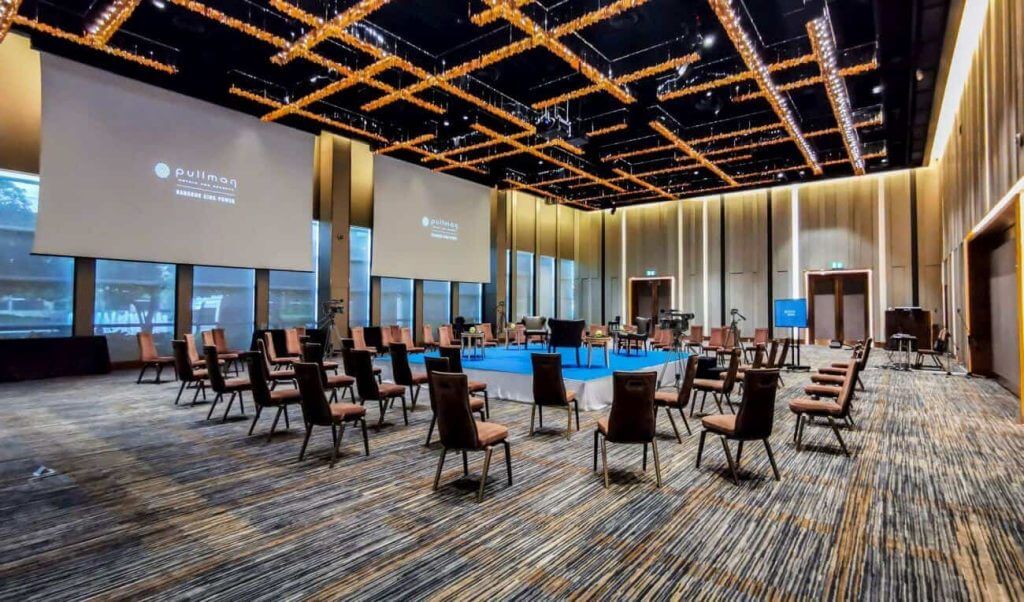The Global Business Travel Association (GBTA), today publishes the findings from a study into organizations’ corporate meetings and events strategy as a result of the pandemic.
The study, made possible by Cvent, examines how US and Canada-based travel meetings and events planners are managing their corporate meetings in the year ahead, the impact of COVID-19 on their events and the use of technology to enhance the delegate experience.
Subscribe to our weekly newsletter and stay up to date
Key Findings Include:
- Number of hybrid meetings set to double in 2021.
The workplace in 2020 will be remembered for virtual meetings, but into 2021, the trend moves towards hybrid meetings, which offer both in-person and virtual experiences.
Prior to the pandemic, approximately seven in 10 respondents (71%) did not hold any hybrid meetings. This figure remained unchanged in 2020.
As restrictions ease and business meetings resume, hybrid meetings could be on the rise to better accommodate both in-person and virtual attendees and reach a broader audience. Three in five respondents (60%) expect their company will hold at least one hybrid meeting in 2021. In addition, two-thirds of respondents (65%) are interested in holding more hybrid meetings as a result of the pandemic.
- Simple meetings will be first to recover.
Approximately half of respondents (52%) expect the number of in-person simple meetings held by their company—with 50 attendees or fewer—to return to the pre-pandemic level within a year.
- For most companies, C-suite executives play a central role in approving requests to hold meetings in the current environment.
Three-quarters of respondents (75%) say C-suite executives are involved with deciding if it is safe to hold a meeting or event in the current COVID-19 environment. Half say these executives (49%) have the most influence over the decision, while 17 percent say their company’s security/risk department has the most influence over the decision. While a number of other stakeholders—including HR, legal/compliance, travel managers/meeting planners and budget owners/business units—are commonly involved when deciding if it is safe to hold a meeting or event, they rarely make the final decision.
- Few companies have central visibility of all of their meetings.
Only 30% of respondents say “most” or “all” of their company’s meetings are visible on a central calendar. A larger number say “few meetings” (19%) or “no meetings” (20%) are available on a central calendar. In some cases, different departments or regional offices plan and track meetings in different ways. This can make it difficult to quickly locate all scheduled meetings in an emergency situation. In addition, without this visibility, organizations risk over-spending and improperly managing their events.
- Respondents find value in virtual meetings as part of a more robust event program.
The nearly complete shift to virtual events in 2020 led to a positive change in respondents’ views towards their effectiveness as part of their overall marketing strategy.
- Respondents want to use technology to enhance the virtual experience.
A large majority are “interested” or “very interested” in adding various technology components to virtual meetings in order to deliver a more engaging and immersive online event. These include virtual conferencing (79%), online registration (76%), post-event attendee surveys (74%), attendee tracking/lead tracking (70%), live polling (70%), and mobile event apps (66%).
While these are common staples of in-person meetings, respondents want to use them for virtual meetings as well to increase engagement and maximize virtual event ROI.
“The pandemic has had a significant impact on how organizations plan and manage their corporate meetings and events,” said Cvent CMO Patrick Smith. “A smart mix of virtual, in-person, and hybrid events is the future; and these three event delivery models will enable companies to reach and engage bigger audiences and gain deeper insight into attendee interests. The use of technology will help to lead the way in this new environment where we expect events to be more numerous and impactful than ever.”





